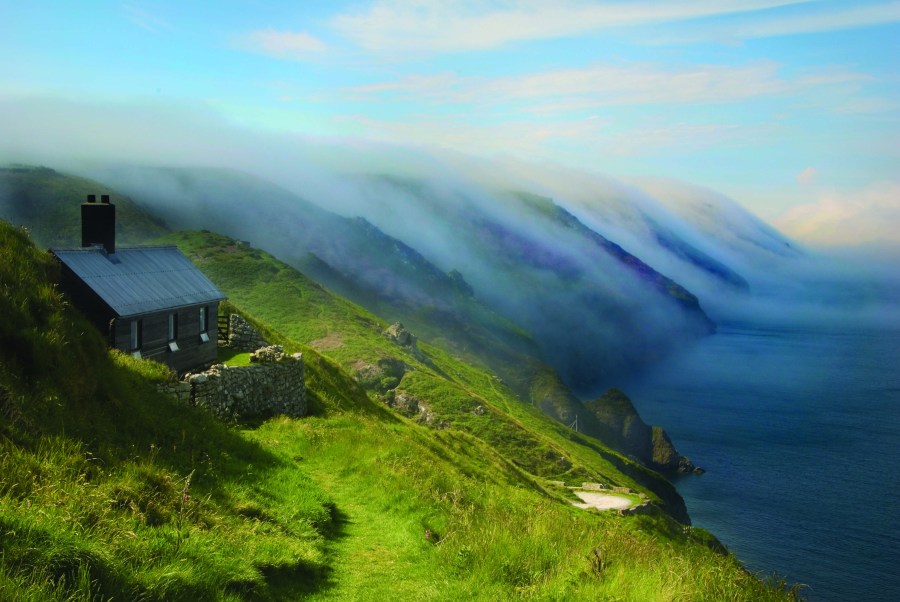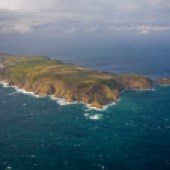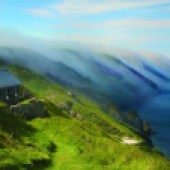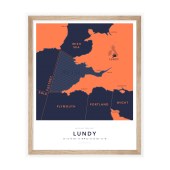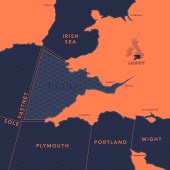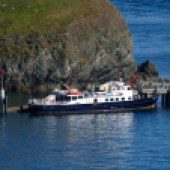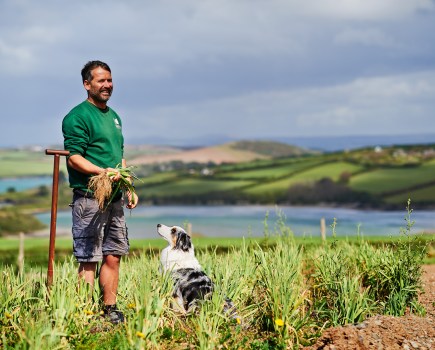Join WILLIAM THOMSON on his journey each month exploring a Shipping Forecast region. This month, he takes a look at the island of Lundy.
Lundy is an island near the entrance to the Bristol Channel, due west of Woolacombe in Devon and 180 degrees south of Tenby in Wales. Although it is an integral part of the Shipping Forecast today, its remote nature means that it wasn’t originally part of the very first storm warning system – a series of cones and barrels placed around the coast to warn mariners of impeding danger at sea.
The system was simple; a cone facing up meant there was probably a gale coming from the north, a cone facing down meant a gale was probably coming from the south, a barrel meant successive gales, a cone facing up above a barrel meant dangerous winds, probably at first from the north, while a cone facing down below a barrel meant dangerous winds, probably at first from the south.
Notice the word probably; this was the very early days of weather forecasting (1861) and the instrumentation was far from precise, using brand new tech. Still, it was a marvel at the time. Even the cone and barrel arrangement that seems so simple today brought together the most advanced technology of the day – all achieved through the vision and determination of Robert Fitzroy (see last month’s issue).
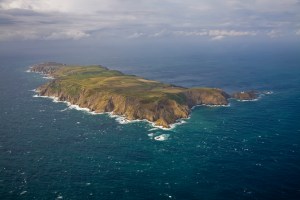
Firstly, he had to collect live weather information from around the British Isles – something nobody had ever done before. With this he then pioneered a system of making charts predicting conditions in the next 24 hours – something nobody had done before. Then he found a way to send warnings to the regions where gales were expected – again, something nobody had ever done before.
The warnings were sent to stations where gales were expected, with simple messages like ‘north cone’ or ‘south cone’. These signals would then be hoisted along that coast. But it was more than just a warning system; Fitzroy used his political clout (he was fourth grandson to the King) to make sure fishing fleets didn’t go out in adverse conditions where disaster was likely.
This was unpopular with the fleet owners and in Tyne the ‘stay at home’ orders were ignored, resulting in considerable loss of life. After that, future restrictions were followed with less hostility; after all, Fitzroy’s mission was to prevent unnecessary loss of life at sea.
But Fitzroy was fighting a losing battle, or at the very least he had to fight hard to push through his changes. The main trouble he faced was that everything was new – he had to pioneer absolutely everything, from how the data was collected to how it was processed, distributed and presented. The challenges were enormous and after years of strain, combined with naturally depressive episodes, he took his life on April 30,1865.
Without Fitzroy leading the charge, his storm warning system was discontinued. The main argument against it was the lack of scientific accuracy, hence the word ‘probably’ in all the forecasts; often the prediction for gales was wrong and ships that stayed at home could have easily gone to sea safely.
But there were also many times it was correct, and without the warning system there was a considerable rise in deaths at sea around Britain. This led to a national outcry and a campaign in the press and Parliament saw the restoration of the system transmitted over radio in 1867, a service that continues to this day and is now known as the Shipping Forecast.
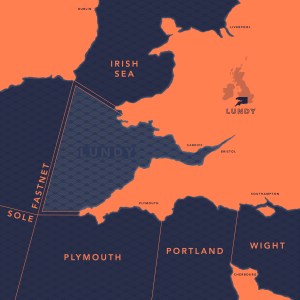
Lundy. Southwest 6 to gale 8, occasionally storm 10 later. Very rough, occasionally very high. Occasional rain. Good.
What does this mean?
A storm 10 is very serious, with winds between 48-55 knots. The conditions this creates can be described as very high waves with long overhanging crests. The resulting foam, in great patches, is blown in dense white streaks along the direction of the wind. On the whole the surface of the sea takes on a white appearance. The tumbling of the sea becomes heavy and shock-like. Converting 55 knots into kilometres means you’d expect winds of just over 100km/h.
As you’d expect, it would be terrible out there in a small boat. But if you were left in any doubt, this is reinforced by the ‘very high’ warning, meaning wave heights would be between 9m and 14m. That’s colossal. In surfing terms it’s 45 feet, well into the ‘big wave’ category and x8 overhead. Imagine being in a boat with waves the size of four-storey buildings all around you, everything covered in white, and you’ll have an idea of what sea that looks like.
What’s the conditions for Lundy today? Tune into the Shipping Forecast at 0048, 05:20, 12:01 or 1754 to find out!
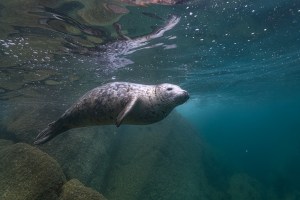
EXPLORE LUNDY
Lundy is a small island off the Devon Coast, measuring just three miles long by half a mile wide. But don’t be fooled by its size; the island packs a big punch – it is affectionately known as Britain’s Galapagos, with a rich and diverse ecosystem teeming with wildlife you don’t find on the mainland. For those interested in scuba-diving, climbing or birdwatching, the island is a paradise.
Just getting there is an adventure in itself, sailing on the classic MS Oldenburg that was built in Bremen in 1958. She has been plying these waters since 1986, with three sailings a week between March and October. With a capacity for 267 passengers, she also carries essential supplies to and from the island; food, fuel, building materials, vehicles, livestock.
It is possible to visit the island for just a day. The boat leaves either Ilfracombe or Bideford and takes two hours, giving you between four and six hours to explore Lundy. If the weather’s incremental, many visitors find plenty of entertainment in The Marisco Tavern, the island’s pub. If you want to get outdoors, remember your snorkel kit because the island is surrounded by crystal clear Atlantic waters teeming with life. Don’t be surprised if a local friendly seal comes to say hello.
The skies are equally resplendent, with Shags, Peregrine Falcons, Herring and Great Black-backed Gulls, Wren, Robin, Blackbird, Song Thrush, House Sparrow – the list goes on. Being on a migratory route you’ll notice different birdlife depending on the season; a perfect excuse for multiple visits throughout the year! With Lundy’s changeable oceanic weather, you’ll be sure to experience unique conditions each visit, creating a special atmosphere every time you explore the magical island.
If you’re like me, a day won’t be long enough on Lundy. Luckily you can stay in a variety of properties on the island, each one with a wonderful name tinged with nostalgia; Old Light Cottage, Radio Room, Castle Cottage.
You can even stay in the lighthouse keeper’s house or a fisherman’s hut built in 1902. This is my favourite – Hanmers is built in the dip of a high hill, giving two advantages. Firstly, it’s sheltered from the prevailing winds. Secondly, it has mind-blowing views over the cliffs and sea. The exterior is clad in black timber, making a beautiful juxtaposition with the luscious greens and blues of the island. Inside it’s perfect snug, the perfect bolthole to escape the world for a few days.
Check out William Thomson’s shipping forecast for The Thames here.

